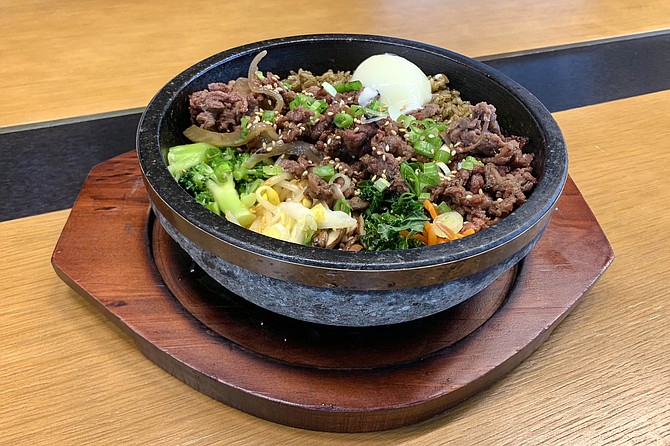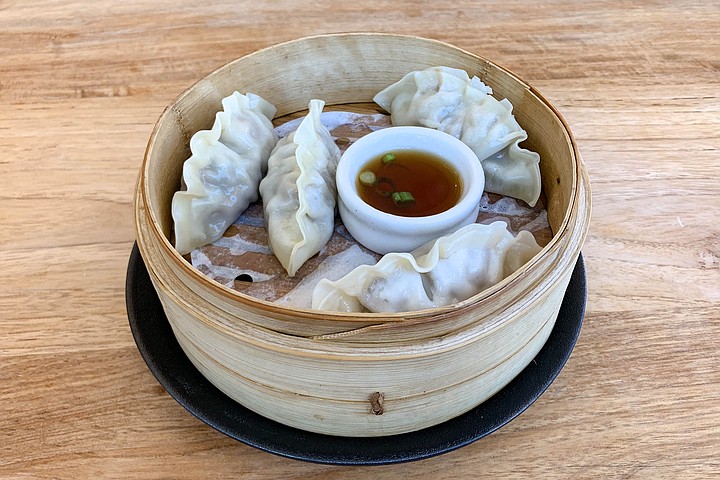 Facebook
Facebook
 X
X
 Instagram
Instagram
 TikTok
TikTok
 Youtube
Youtube

There’s an aisle on the ground level of the B parking lot on the south side of Fashion Valley mall, where two arrows painted on the asphalt point away from the exit. Problem is, you have to disobey the arrows to leave the parking lot, because this is the only way out. It only took me two rounds of driving all the aisles to figure that out, like a lab rat in a maze.
That pretty well illustrates my mistrust of malls. I grew up in them, of course. For a while I even had the top score on this old stand-up video game Space Harrier, in the arcade at the Plaza Camino Real mall (I guess they call it the Shoppes of Carlsbad now). Friday nights were spent cruising with my friends, going from the arcade to the food court to the movie theater, pretty much the whole Stranger Things loop. We enjoyed it, but really we went back week after week because it was the only place our parents would willingly drop us off for a few hours. I guess they thought its overt retail overtures marked it a safe zone for preteens. Whatever their reasoning, it was the nearest glimpse we suburban kids got to urban life.

So I avoid malls as an adult, because they remind me of an awkward time I was quarantined from the great wide world. And yet, here I found myself, stuck in this parking lot at Fashion Valley, because there was this restaurant I wanted to try.
It’s not like the old days, when mall food solely consisted of garishly cheap reheats along the lines of Sbarro and Hot Dog on a Stick. Lately, there’s credible food to be found in malls. Good enough that one might go to the mall to eat, and maybe do some shopping after, rather than the other way around.

What drew me to Fashion Valley was Bibigo Kitchen, part of a self-described Korean Cuisine Brand, that “takes 5000 years of delicious Korean cuisine and updates it for today’s modern, non-stop lifestyles.” That marketing copy did not lure me to the restaurant. I was more curious to see what it’s like having Korean dining carve out a spot in such a mainstream American locale. The last time I went to a mall seeking food was to check out the UTC Westfield location of Din Tai Fung, part of the restaurant chain that made xiao long bao soup dumplings world famous. But Chinese food has been all over America for a hundred years.
Korean food less so. That said, Bibigo is a dominant global food force in its own right (also with a presence at the UTC mall). It markets food to grocery stores as well as restaurants in global capitals London and Beijing. And it’s likewise spreading its reach throughout Southern California. It even has its own trademark dumplings: savory steamed Mandu dumplings ($6) filled with beef meatballs (or vegetables). It’s not xiao long bao, but it’ll do.

Found at a southern entrance to Fashion Valley, the restaurant feels sleek and modern, with high ceilings, plenty of polished wood, and a partially open kitchen. It sits at the upper strata of fast casual; you order at a counter and take a table flag, but you may order from a wide selection of teas, plus beer, wine, and soju and makgeolli cocktails.
The basic order is a mix-and-match plate where you choose a protein, a base of rice, noodles, or salad, and an accompanying side ($13-18). There was nothing exceptional about my roasted free-range chicken breast with gochujang aioli with sesame noodles and grilled broccolini ($13). The noodles were dry, but everything tasted healthy and fresh, no excess oil, fat, or salt. Really nice chicken. Again, a far cry from the mall fare of my youth.
What really got me int the door was the chance to order a hot stone bibimpap within the boundaries of a mall. The $14 bowl of beef bulgogi is served over seaweed infused rice and joined by kale, broccoli, bean sprouts, carrots, and onions. For two bucks more they toss on a sous vide egg. With a splash of Bibigo brand gochujang hot sauce, this perfect little meal outperformed my entire mall-bound childhood, Orange Julius included.
Experienced fans of Korean food will miss banchan, but if you’ve been waiting for this cuisine to break through to a wider American audience and become as ubiquitous a fixture as Chinese or Thai food, this is the place that could do it. I’ve come to grips with the idea: maybe for Korean cuisine to go mainstream, it needs to thrive in the mall.


There’s an aisle on the ground level of the B parking lot on the south side of Fashion Valley mall, where two arrows painted on the asphalt point away from the exit. Problem is, you have to disobey the arrows to leave the parking lot, because this is the only way out. It only took me two rounds of driving all the aisles to figure that out, like a lab rat in a maze.
That pretty well illustrates my mistrust of malls. I grew up in them, of course. For a while I even had the top score on this old stand-up video game Space Harrier, in the arcade at the Plaza Camino Real mall (I guess they call it the Shoppes of Carlsbad now). Friday nights were spent cruising with my friends, going from the arcade to the food court to the movie theater, pretty much the whole Stranger Things loop. We enjoyed it, but really we went back week after week because it was the only place our parents would willingly drop us off for a few hours. I guess they thought its overt retail overtures marked it a safe zone for preteens. Whatever their reasoning, it was the nearest glimpse we suburban kids got to urban life.

So I avoid malls as an adult, because they remind me of an awkward time I was quarantined from the great wide world. And yet, here I found myself, stuck in this parking lot at Fashion Valley, because there was this restaurant I wanted to try.
It’s not like the old days, when mall food solely consisted of garishly cheap reheats along the lines of Sbarro and Hot Dog on a Stick. Lately, there’s credible food to be found in malls. Good enough that one might go to the mall to eat, and maybe do some shopping after, rather than the other way around.

What drew me to Fashion Valley was Bibigo Kitchen, part of a self-described Korean Cuisine Brand, that “takes 5000 years of delicious Korean cuisine and updates it for today’s modern, non-stop lifestyles.” That marketing copy did not lure me to the restaurant. I was more curious to see what it’s like having Korean dining carve out a spot in such a mainstream American locale. The last time I went to a mall seeking food was to check out the UTC Westfield location of Din Tai Fung, part of the restaurant chain that made xiao long bao soup dumplings world famous. But Chinese food has been all over America for a hundred years.
Korean food less so. That said, Bibigo is a dominant global food force in its own right (also with a presence at the UTC mall). It markets food to grocery stores as well as restaurants in global capitals London and Beijing. And it’s likewise spreading its reach throughout Southern California. It even has its own trademark dumplings: savory steamed Mandu dumplings ($6) filled with beef meatballs (or vegetables). It’s not xiao long bao, but it’ll do.

Found at a southern entrance to Fashion Valley, the restaurant feels sleek and modern, with high ceilings, plenty of polished wood, and a partially open kitchen. It sits at the upper strata of fast casual; you order at a counter and take a table flag, but you may order from a wide selection of teas, plus beer, wine, and soju and makgeolli cocktails.
The basic order is a mix-and-match plate where you choose a protein, a base of rice, noodles, or salad, and an accompanying side ($13-18). There was nothing exceptional about my roasted free-range chicken breast with gochujang aioli with sesame noodles and grilled broccolini ($13). The noodles were dry, but everything tasted healthy and fresh, no excess oil, fat, or salt. Really nice chicken. Again, a far cry from the mall fare of my youth.
What really got me int the door was the chance to order a hot stone bibimpap within the boundaries of a mall. The $14 bowl of beef bulgogi is served over seaweed infused rice and joined by kale, broccoli, bean sprouts, carrots, and onions. For two bucks more they toss on a sous vide egg. With a splash of Bibigo brand gochujang hot sauce, this perfect little meal outperformed my entire mall-bound childhood, Orange Julius included.
Experienced fans of Korean food will miss banchan, but if you’ve been waiting for this cuisine to break through to a wider American audience and become as ubiquitous a fixture as Chinese or Thai food, this is the place that could do it. I’ve come to grips with the idea: maybe for Korean cuisine to go mainstream, it needs to thrive in the mall.
Comments